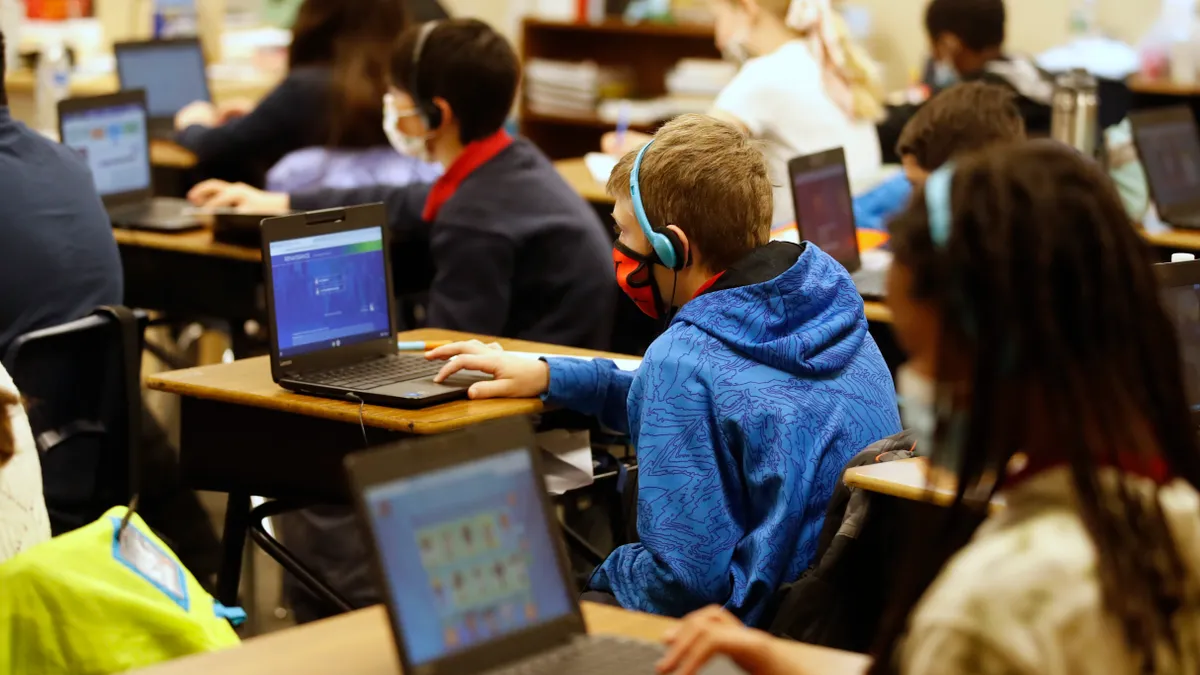Dive Brief:
- While average class sizes in K-12 grades have remained constant since 2016, new federal relief funding may give school districts the opportunity to fulfill long-desired aims to reduce the numbers of students in classes, a new review of state policies by the National Council on Teacher Quality said.
- Targeted class size policies, such as those for core academic courses, high poverty schools or English learners, may yield more support for students most impacted by pandemic hardships, rather than system-wide class reductions, wrote Patricia Saenz-Armstrong, a senior economist with NCTQ.
- Pandemic-forced virtual learning, cohorting and social distancing will add another layer to the long-standing debate about how big classes should be and even whether to focus on class sizes, student-teacher ratios or another metric to ensure student needs are met.
Dive Insight:
There’s been a sizable jump over the last five years in the number of districts that have established limits on class sizes, Saenz-Armstrong wrote. The percentage of districts that have defined a class size limit for any grade or subject has increased from 68% in 2016 to 87% in 2021, according to NCTQ’s review of contractual obligations of 148 school districts for class sizes.
But of those districts, only pre-K classes have a notable average class size reduction — from 20 students per class in 2016 to 17 in 2021. Grades 9-12 currently experience the largest average class size, at 30 students.
Saenz-Armstrong said that average decrease in pre-K class nationally may be due to efforts in Texas to limit pre-K class capacities and the significant role Texas districts had in the sample size for the review.
Smaller class sizes allow teachers to dedicate more attention to each student and help reduce achievement gaps in underserved student populations, say those who have advocated for fewer students per classroom.
The U.S. Department of Education has said smaller class sizes can help with COVID-19 mitigation, as well as allow teachers to be responsive to personalized efforts to accelerate learning after last year’s disruptions to in-person instruction.
Historically, one of the biggest challenges to reducing class sizes has been lack of funding. But now some school systems are looking to spend federal relief funding to make smaller class sizes a reality.
In their state plans for Elementary and Secondary School Emergency Relief funding, West Virginia, Minnesota, Maine, and Alaska specifically mentioned goals to reduce class sizes to help with learning recovery, for social distance purposes and to support students most in need of pandemic-recovery supports, according to a FutureEd state tracker on ESSER planning.
The Center on Reinventing Public Education reports that Michigan’s Detroit Public Schools is dedicating ESSER funds for one-time bonuses and to hire additional teachers in order to lower class sizes in the short term.
“As school districts begin to spend down their ESSER funds, and assuming there are available teachers to hire, devoting a portion of funds to this kind of targeted class size reduction is very much in the spirit the funding was formulated, and would achieve a less congested learning environment, something both students and teachers would welcome,” Saenz-Armstrong wrote.













